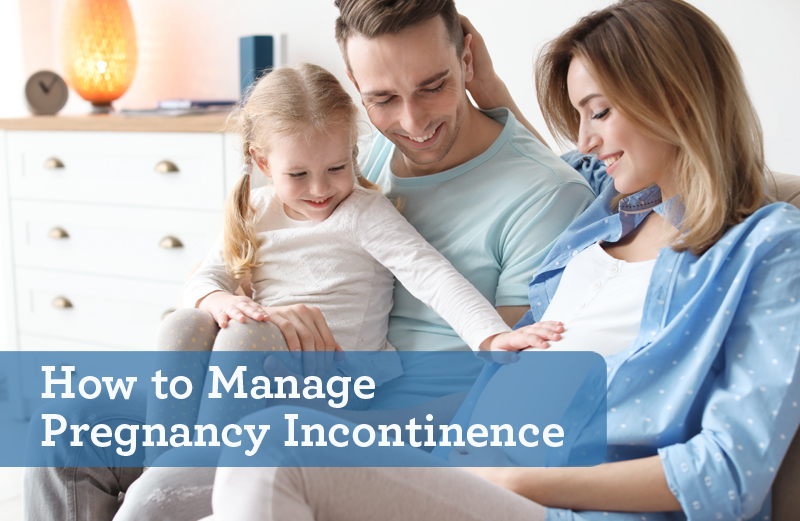If you are experiencing urinary incontinence during your pregnancy, you’re certainly not alone. According to the National Association for Continence (NAFC), this is the most common type of incontinence to affect mothers. In fact, the NAFC says that 30-50 percent of childbearing women experience urinary incontinence by the time they’re 40 years old and up to 63 percent of women who report stress incontinence say that it started during or after pregnancy. The good news is that there are steps you can take to manage pregnancy incontinence which may also help after your baby is born.
What is urinary incontinence?
During an episode of urinary incontinence (UI) there is a loss of bladder control that results in the accidental leakage of urine. For some, that may be a few drops of urine, but for others, it may be much more. In a normal urinary system, the muscles and nerves are coordinated to hold urine in the bladder until a person is ready to release it. In UI, this process is weakened or disrupted for some reason, resulting in a loss of bladder control.
There are different types of UI—which are based on the symptoms someone is experiencing. They include:
- Stress incontinence—in which urine is lost when there is pressure exerted on the bladder from something, such as coughing, sneezing, or laughing.
- Urge incontinence—in which there is a sudden, intense urge to urinate, followed by an involuntary loss of urine.
- Overflow incontinence—in which an inability to completely empty the bladder results in frequent or constant dribbling of urine.
- Mixed incontinence—in which symptoms of more than one type of incontinence are present.
Why incontinence occurs during pregnancy
There can be several reasons a woman experiences incontinence during pregnancy. Since a strong pelvic floor is important to bladder control and this structure is stressed during pregnancy, expectant mothers are especially prone to this condition. Additional causes include:
- Pressure: A growing baby puts extra pressure on the bladder, which is made worse with activities such as coughing, sneezing, exercising, and laughing.
- Hormones: A woman’s hormones change during pregnancy, which can affect the lining of the bladder and urethra.
- Medical conditions: Some women may have medical conditions that contribute to incontinence, such as diabetes.
- Urinary tract infections (UTIs)—which can be common during pregnancy, contributing to incontinence.
Managing pregnancy incontinence
Depending upon what may be contributing to incontinence during pregnancy, there are steps you can take to manage it. For instance, if you think you may have a UTI, be sure to see your doctor for treatment. Additional strategies for managing pregnancy incontinence include:
- Scheduling frequent bathroom breaks. As the baby grows, there is less room in the bladder to store urine. Planning breaks in frequent intervals will help to avoid leakage from a too-full bladder.
- Practicing Kegels. Kegel exercises aid in strengthening the pelvic muscles, which help to hold urine in the bladder. Practicing them is a good habit to adopt before, during, and after pregnancy to manage UI. However, only 25 percent of women perform a Kegel correctly, so it’s important to ask your provider for guidance.
- Being careful about weight gain. Gaining excess amounts of weight during pregnancy can contribute to UI.
- Considering birthing strategies. In addition to strategies that help to strengthen the pelvic floor, the NAFC recommends that women discuss various birthing strategies with their providers, which may make a difference.
While urinary incontinence can be extremely common during pregnancy, there are ways to manage it to support your quality of life. We at Western Michigan Urological Associates want to help develop a treatment plan, specific to your needs, and help you effectively deal with your symptoms of pregnancy incontinence. Ask Your Primary Care Provider for a Referral.


